Efficient Recovery of Valuable Resources from Construction and Demolition Waste
Introduction
Although significant measures have been actioned for a few decades, CO2 concentration in the atmosphere is still on the rise, contributing to global warming. The current Newton Project aimed at enhancing the quality of geopolymer concrete prepared from construction demolition waste (CDW) by capturing CO2 in CDW constituents using the cost-effective technique (accelerated carbonation). Therefore, the key target of the current project is to develop innovative/environmentally-friendly CDW-based construction materials/demountable structural systems to achieve higher levels of circularity in civil engineering materials/structures. The outcomes of the current project can contribute to achieving multiple benefits in terms of innovativeness/circularity/sustainability by reusing higher amounts of low-carbon-footprint materials and eliminating the consumption of natural resources as well as CO2 emissions.
Project goals
- To develop novel and environmentally-friendly geopolymer concrete produced from CDWs by considerably less energy-intensive, more economical and easily applicable techniques of alkali-activation for green concrete production.
- To enhance the quality of CDW-based fine/coarse aggregates by accelerated carbonation technique by improving their surface, water absorption and porosity
- To develop CO2 capture technique based on carbonation reactions occurred, and determining the optimum carbonation conditions (e.g. duration/temperature/CO2 pressure/concentration/humidity).
- To incorporate CO2-rich aggregates into designs of green concretes and assessing the quality of the final project mix by conducting different tests (i.e. mechanical, durability and microstructural properties).
- To validate the ultimate products (materials/structures) with additional green perspective through a detailed large-scale field demonstration under real-time conditions, ensuring the global applicability of proposed solutions of recycled aggregates surface mineralisation.
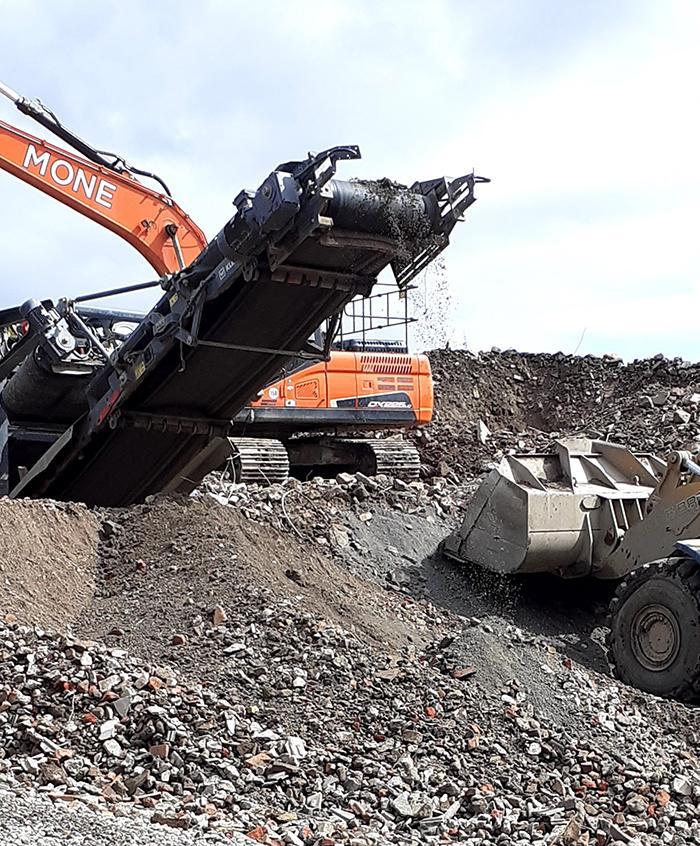
Project stages:
Stage I includes selecting and preparing CDW materials, testing the characterization of CDWs, grinding CDWs and conducting trail mixes in order to determine the concrete mixture for the project.
Stage II covers design carbonation conditions and conducting preliminary studies on accelerated carbonation technique to assess the effect of different parameters (e.g. the pressure applied, exposure period and CO2 concentration) on the quality of CDW based fine/coarse aggregates in order to reach the optimum conditions.
In Stage III, the quality of concrete produced from carbonated aggregates will be assessed by conducting the main mechanical properties (e.g. compressive strength, tensile and flexural strength, bond strength and the modulus of elasticity), microstructural analysis (SEM and XRD), and durability properties (e.g. shrinkage and corrosion). The cost and environmental impact of the final concrete mixture will be also assessed.
Stage IV will focus on the construction of a circular case study of one storey building (~100m2) using green concrete-incorporated demountable structural elements aligned with predominant building practices across UK and Turkey to enhance the applicability and the impact of this project. This large scale building will demonstrate the impact and practicality of the project in terms of constructing affordable housing targeting in-need people not only in Newton countries, but in all countries around the world.
Newton for Climate – Newton Prize 2020 - Turkey
Newton for Climate Webinar is a series of talks, focusing on the excellent science and research projects funded under the Newton- Katip Celebi UK-TR Science and Innovation Fund which are challenging climate change with novel technologies and research. They will be running ahead of the 26th UN Climate Change Conference of the Parties (COP26) in Glasgow (31 October – 12 November 2021), demonstrating the impact of the successful joint research in Environmental Studies. The first webinar in this series will host Prof. Ashraf Ashour from the University of Bradford and Prof. Mustafa Sahmaran from Hacettepe University, involving their award winner project “modular construction system of green structural components for low-cost housing”, in 7th of October 13.30 (BST). The session will be moderated by Nick Mellors, the Regional Manager of UK Science & Innovation Network for Eastern Mediterranean and Central & Eastern Europe based in British Consulate-General Istanbul.
The project aims to tackle two main environmental challenges facing the construction industry, namely the energy-inefficient, carbon-intensive production of Portland cement, the current concrete binder, that accounts for 5-8% of total human-driven CO2 emissions, and the construction and demolition waste that is regarded to be responsible for more than a third of all waste generated in the EU, most of which are going to clean landfills jeopardizing the health of individuals and environments. Therefore, the Newton-Prize 2020 project proposes a new construction paradigm composed of pre-fabricated large-scale elements made from geopolymeric concrete whose constituents are entirely obtained from construction and demolition waste (CDW) for truly sustainable infrastructural development. It also explores a new design approach, Design for Deconstruction, to facilitate the future reuse of structural elements at the end of their life, potentially achieving more than 50% reduction in embodied energy of structures as well as giving the clients the benefit of retaining the value of their assets.
Recycled materials used in the project
- To develop novel and environmentally-friendly geopolymer concrete produced from CDWs by considerably less energy-intensive, more economical and easily applicable techniques of alkali-activation for green concrete production.
- To enhance the quality of CDW-based fine/coarse aggregates by accelerated carbonation technique by improving their surface, water absorption and porosity
- To develop CO2 capture technique based on carbonation reactions occurred, and determining the optimum carbonation conditions (e.g. duration/temperature/CO2 pressure/concentration/humidity).
- To incorporate CO2-rich aggregates into designs of green concretes and assessing the quality of the final project mix by conducting different tests (i.e. mechanical, durability and microstructural properties).
- To validate the ultimate products (materials/structures) with additional green perspective through a detailed large-scale field demonstration under real-time conditions, ensuring the global applicability of proposed solutions of recycled aggregates surface mineralisation.
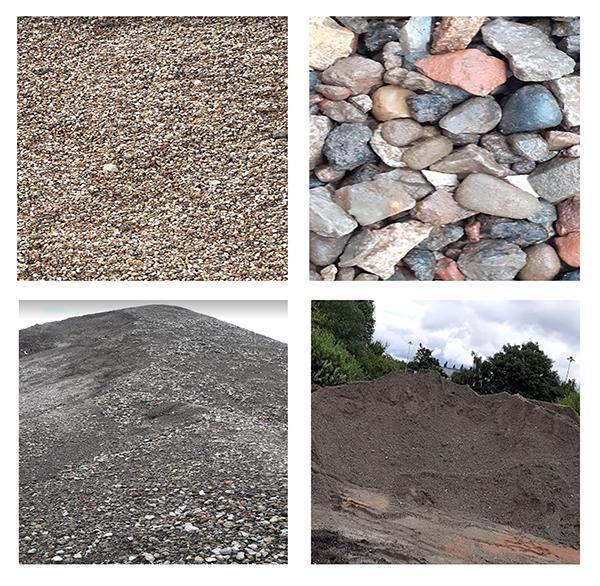
Top two images show recycled coarse aggregate, bottom images show fine recycled aggregate
Waste bricks as precursors for geopolymer
-600x506.jpg)
Waste bricks as precursors for geopolymer
Waste tiles as precursors for geopolymer
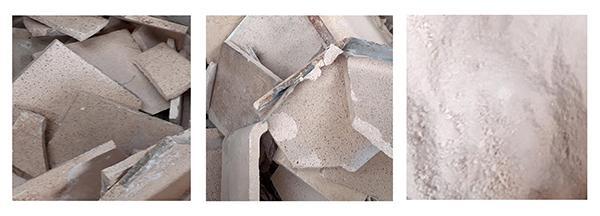
Waste tiles as precursors for geopolymer
Casting and testing CDW based geopolymer

Casting and testing CDW based geopolymer
Carbon capture technique
Within the scope of the project, related studies on CO2 capture has been started by using a pilot-scale carbonation reactor with a rotational chamber (see below), which can provide to implement different ranges of operational parameters [e.g., temperature (25-100 °C), humidity (50-95%), CO2 concentration (0-20%) and pressure (0-5 bar)].
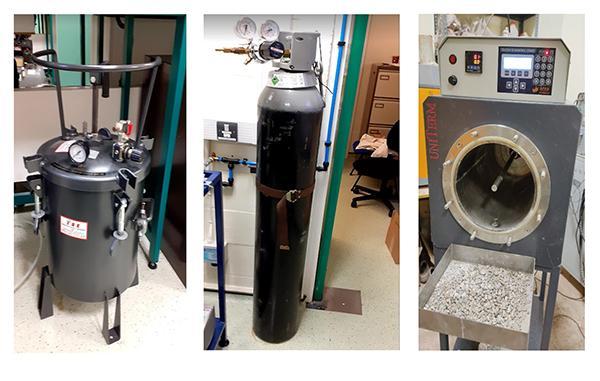
Carbon capture equipment
Demountable dry connections progress
As mentioned earlier, one of the key objectives of the current project is to develop a holistic approach for the demountable construction of geopolymer concrete made of demolition waste. Therefore, a connection capable of jointing beam and column as well as column and foundation was designed and tested for the first time in the literature. This connection was proved to resist inter-story drift ratios up to 4% without significant loss of capacity. Thus, the project reached a milestone in the demonstration of the demountable geopolymer concrete building construction.
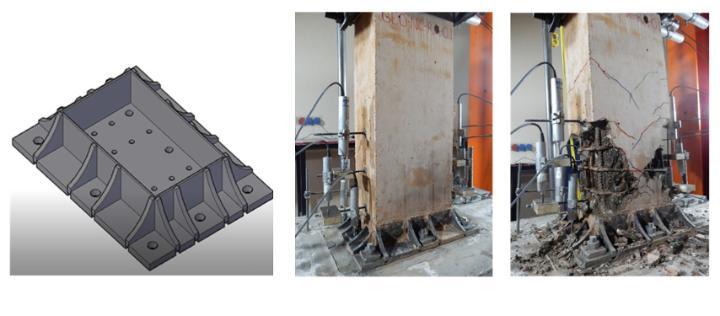
Design and testing of jointing beam and column connection
Project outputs
Current achieved activities
- Visiting and contacting local recycling sites of CDW to explore materials availability and identify the most suitable for the project.
- Casting different geopolymer mixtures in order to identify the optimum mixture for the project, considering various parameters such as the concentrations (molarities) of sodium hydroxide, the ratio between silicate and hydroxide, and liquid to solid ratio.
- With the purpose of determining the CO2 consuming/binding capacity of recycled aggregate and optimal operating conditions for carbonation, studies were conducted by using a carbonation chamber. According to obtained results, carbonated recycling aggregates showed successful results in terms of workability, mechanical and micromechanical properties compared to uncarbonated recycled aggregates.
- A connection capable of jointing beam and column as well as column and foundation were designed and tested.
- A connection capable of jointing slab segments with each other to form large scale slabs was also designed and tested.
Dissemination Activities:
Up to now, five articles have been prepared and submitted to the prestigious refereed journals:
- A manuscript titled “The Effect of Chemical- Versus Microbial-Induced Calcium Carbonate Mineralization on the Enhancement of Fine Recycled Concrete Aggregate: A Comparative Study” was submitted to the journal of “Journal of Building Engineering”.
- A manuscript titled “Shear Behaviour of Reinforced Construction and Demolition Waste-Based Geopolymer Concrete Beams” was submitted to the journal of Construction and Building Materials.
- A review article on dry-joint connections titled “Demountable concrete connections: review and future developments” accepted in the journal of “Structures”.
- A manuscript titled “Dry connections for demountable reinforced concrete slabs” to the journal of “Engineering Structures”.
- Two review articles on the use of CDW in producing geopolymer concrete and capture and storage of CO2 in construction materials are under preparation; they will be submitted to the construction and building materials or clean technology journal.
